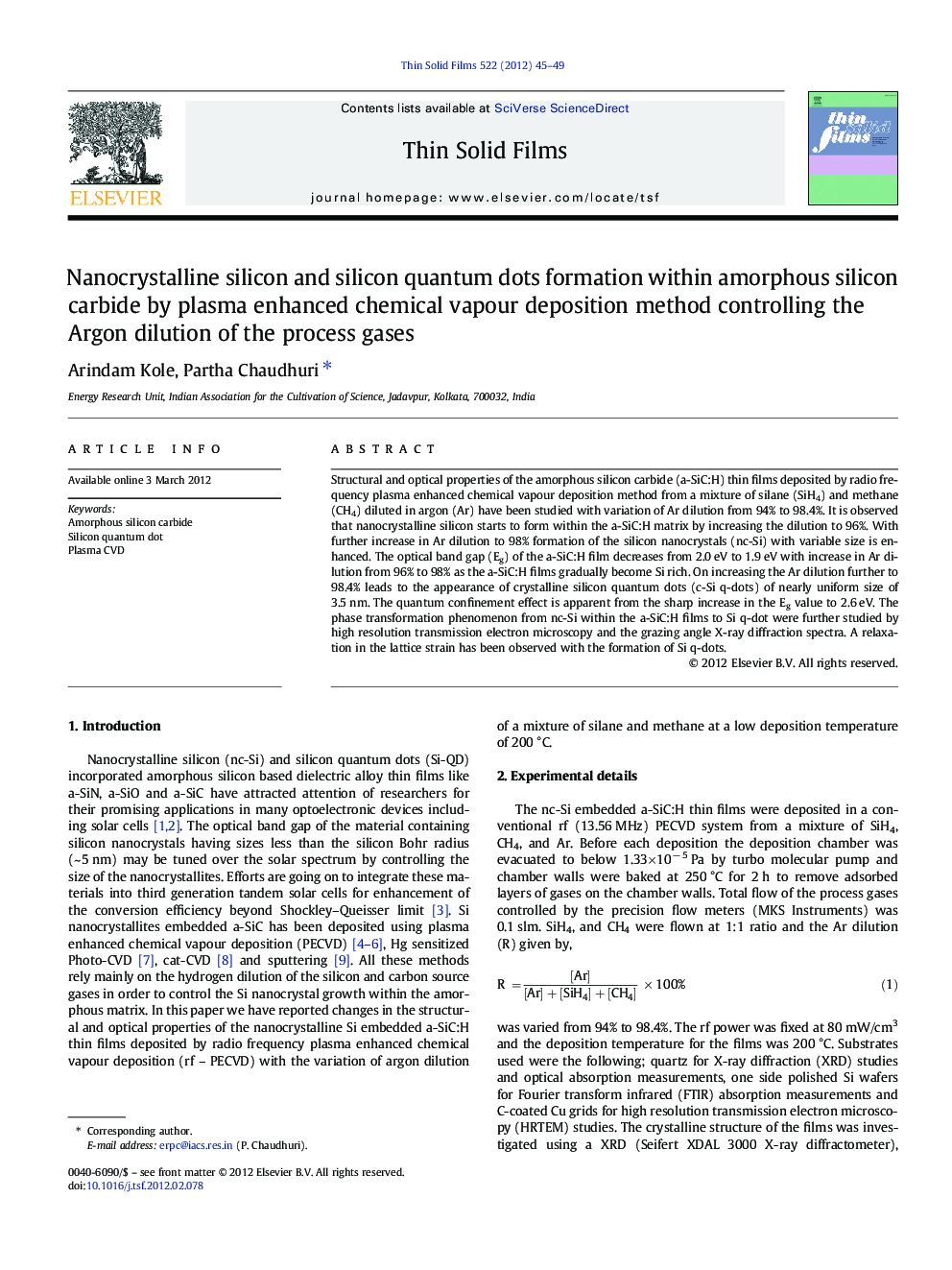| Article ID | Journal | Published Year | Pages | File Type |
|---|---|---|---|---|
| 1666617 | Thin Solid Films | 2012 | 5 Pages |
Structural and optical properties of the amorphous silicon carbide (a-SiC:H) thin films deposited by radio frequency plasma enhanced chemical vapour deposition method from a mixture of silane (SiH4) and methane (CH4) diluted in argon (Ar) have been studied with variation of Ar dilution from 94% to 98.4%. It is observed that nanocrystalline silicon starts to form within the a-SiC:H matrix by increasing the dilution to 96%. With further increase in Ar dilution to 98% formation of the silicon nanocrystals (nc-Si) with variable size is enhanced. The optical band gap (Eg) of the a-SiC:H film decreases from 2.0 eV to 1.9 eV with increase in Ar dilution from 96% to 98% as the a-SiC:H films gradually become Si rich. On increasing the Ar dilution further to 98.4% leads to the appearance of crystalline silicon quantum dots (c-Si q-dots) of nearly uniform size of 3.5 nm. The quantum confinement effect is apparent from the sharp increase in the Eg value to 2.6 eV. The phase transformation phenomenon from nc-Si within the a-SiC:H films to Si q-dot were further studied by high resolution transmission electron microscopy and the grazing angle X-ray diffraction spectra. A relaxation in the lattice strain has been observed with the formation of Si q-dots.
